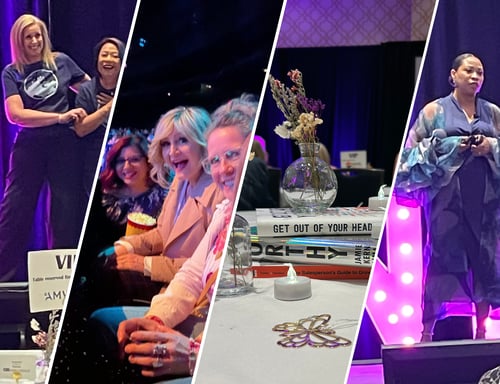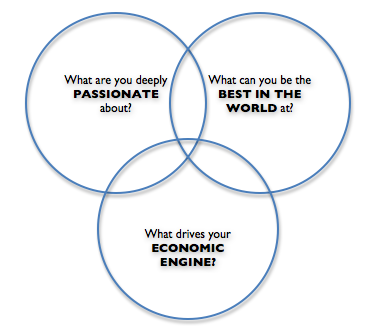How often have you heard the excuse that commoditization is the reason we are unable to deliver sales or profits? Is this merely a convenient excuse, or is there validity to the statement? The reality is that both are correct. However, the question we should really be asking is, “What can be done to get out of the cycle of commoditization?”
As a product or industry matures, there is a progression through the commoditization cycle. At each stage, the ability to maintain margin is challenged and requires different strategies to do so. Let’s take a closer look.
The Cycle
Innovation
Actually, before the cycle starts, there is a need. Sometimes the market drives the need and sometimes a company creates a need. You know the saying, “necessity is the mother of invention.” Innovation can be the creation of a new product/service or an improvement on one that already exists.
In this phase, prices are high and maintaining margin is simple. After all, you are a unique provider. The attractive margin attracts competitors and eventually moves you to the second phase.
Sales/Marketing
As competition arrives, prices drop. Margins are still attractive and an emphasis is placed on gaining market share to improve overall profitability. Eventually, the marketplace becomes saturated and the third stage of the cycle becomes inevitable.
Operations
In the third stage, cutting costs becomes the only way to maintain margin. Services may be cut, deliverables may be removed, commissions may be reduced. When the only new customers you can get are ones taken away from someone else, cutting costs becomes the focus.
Consolidation
The final stage in the cycle. When there are no new customers and when all of the costs have been stripped out, the only remaining option to maintain margin is through the economies of scale that come through consolidation with competitors.
A closer look at commodities
We all feel we know what a commodity is, but are you really familiar with the elements that exist within a commodity? Think about how many of the following seem to fit your business model and value proposition.
- Price is a primary decision factor. Are your clients hiring you because you brought the best price or are you giving them a non-price reason to engage you?
- Services are common. . Does your value proposition focus on anything other than “we provide great service” and a list of value-added services that look like everyone else’s?
- Most companies think they are the exception. . Have you ever caught anyone in your organization saying, “Yeah, we’re in a commoditized industry, but that isn’t us. We’re different.” You may be, but the great service and value-added services mentioned in the previous bullet point doesn’t make you an exception.
- Profit margins shrink. . Is your bottom line growing at least as quickly as your top line?
- Income of sales people begin to decline. . Have you ever had to cut commissions to maintain profit margin?
- Pressure on the middle of distribution channel. Do you fear the possibility of disintermediation?
If any of these elements are descriptive of you, you are being threatened by the commoditization cycle. It is imperative to stay in the first two phases of the cycle. Once you cross into the third stage of the cycle, you can expect the following threats:
Profitability – If your agency isn’t profitable, it cannot make the necessary investments for future growth.
Income – One of the first cost-cutting measures an agency will take as it moves into the third phase is to cut, or at least freeze, compensation, especially for the sales staff. This is a threat to the individuals already there and to the agency’s ability to attract future talent.
Differentiation – If you can’t remain in the first two stages of the cycle, your job becomes much harder. Once you become a commodity, you are relegated to having the same value proposition as everyone else. You will only be successful to the degree that you can tell that story better than can your competition. Adding new clients and retaining current clients becomes much harder than necessary.
Your challenge is to have a strategy to remain in or return to the first two stages of the cycle. Here’s the good news:
- What you do is the only commodity.
- How you do it is your opportunity to differentiate and compete in the first two stages.
Beating the commoditization blues
The million dollar question is, how do I, within a commoditized industry, become that non-commodity competitor?
Focus on your "How." Your competition has the same basic tools as you and spends most of their sales resources focusing on those tools. The prospect doesn’t really care what resources you have. In fact, to the prospect, everyone’s tools and resources look pretty much the same. Focus on how you will use those tools and resources to the benefit of the prospect and you no longer look like everyone else.
Play a different game. The authors of the book Blue Ocean Strategy talk about creating new oceans of opportunity. Turn away from the traditional role you have played with your prospect/clients and think of new, creative ways to provide value. When you are able to sail in a blue ocean, you are navigating smooth waters clear of competition. Leave the competition to compete in the bloody red waters of a commoditized value offering.
Deliver value through your sales process. Your first opportunity to separate yourself from your commoditized competitors is during your sales process. Follow a sales process that in itself provides value and you will stand alone (or at least with a very small group) in the marketplace.
Practice innovative thinking. Like any skill, thinking innovatively takes time and it takes practice. Set goals for yourself to come up with at least two original thoughts each week that you can take to your prospects and clients.
Expand your value. Your prospects/clients expect you to bring insurance expertise; that’s the minimum expectation. The opportunity to wow a prospect/client with what they minimally expect doesn’t exist. However, bring them value in unexpected ways and the wow factor is almost guaranteed. Build your business acumen and you guarantee yourself to not be viewed as a commodity.
Borrow great ideas. Always be on the lookout for great ideas, from any source. Keep a notebook with you and write down every great idea you find. Later, spend time reflecting on the great idea and identify ways to incorporate them into the value proposition you take to your marketplace. Anyone who can connect business owners to great ideas has more value.
You’ll know you have stepped away from the last two stages when you hear comments like “I never thought of it that way before” or “I’ve never seen anything like this.”
However you approach commoditization, try to innovate at all costs to beat it back. Because, as Peter Drucker said, "In a commodity market, you can only be as good as your dumbest competitor."
Avoiding the commoditization trap will take some work, but your very survival may depend on your commitment to doing so. Ask yourself, “How badly do I want it?”
Content provided by Q4intelligence
Photo by gajus






